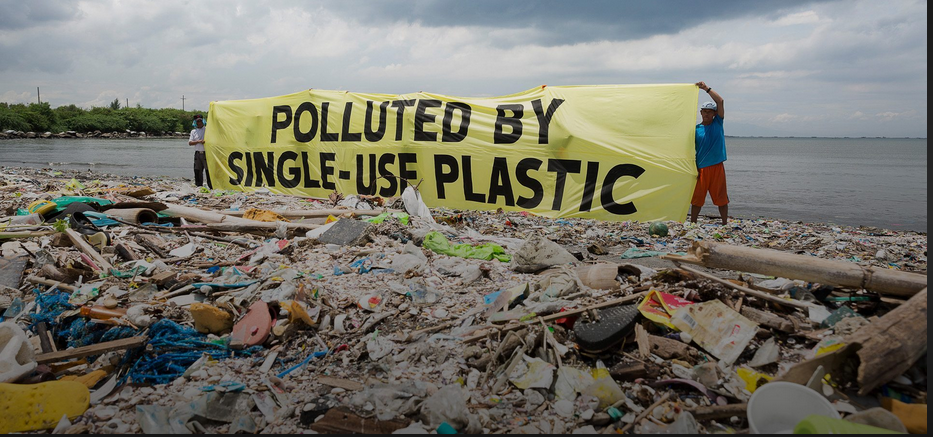The term means simply: made to be used only once, and thrown away. Most often it applies to the use and disposal of plastic containers. The simplicity of the meaning belies the dangers from the use and disposal of plastics. The problem is that plastics are the main ingredient of many utensils and containers that we rely on daily, including cups, straws, cotton swabs, disposable plates, bottles and cutlery, as well as plastic bags and packaging. These commonly used consumer products are dumped in landfills and on roadsides and often end up discharged to the rivers and seas. They do not decompose in the environment and remain in the seas and oceans for a long time.

The size of the problem is daunting. 1,000,000 plastic bottles are bought each minute in total, and in the U.S. only about 23% are recycled. About 4 trillion plastic bags are used worldwide annually, and only 1% are returned for recycling. See Earth Day Factsheet, below.
The problem has become so widespread that the term “single-use” was recently selected by Collins Dictionary as the word of the year in 2018.
The answer is to re-use and recycle whatever products we rely on for our daily needs, and not to use plastic.
Some further ideas to explore on Single Use:
Are there products with no plastic that are used once and thrown away? If so, are they destructive of the environment?
Make a list of each single-use plastic product you use at least once a week and find an alternative for each product.
Now start substituting the alternatives for the single-use plastic products, and calculate if this is costing you any more money.
Sources:
Alison Flood, “’Single-use’ named 2018 word of the year,” The Guardian (7 Nov 2018). bit.ly/2JL2wqe
Earth Day 2018, Fact Sheet: Single Use Plastics bit.ly/2xR8943
Plastic Free Challenge, WHAT IS SINGLE-USE PLASTIC AND WHY IS IT A PROBLEM? bit.ly/2F7WX1T


No comments yet, add your own below